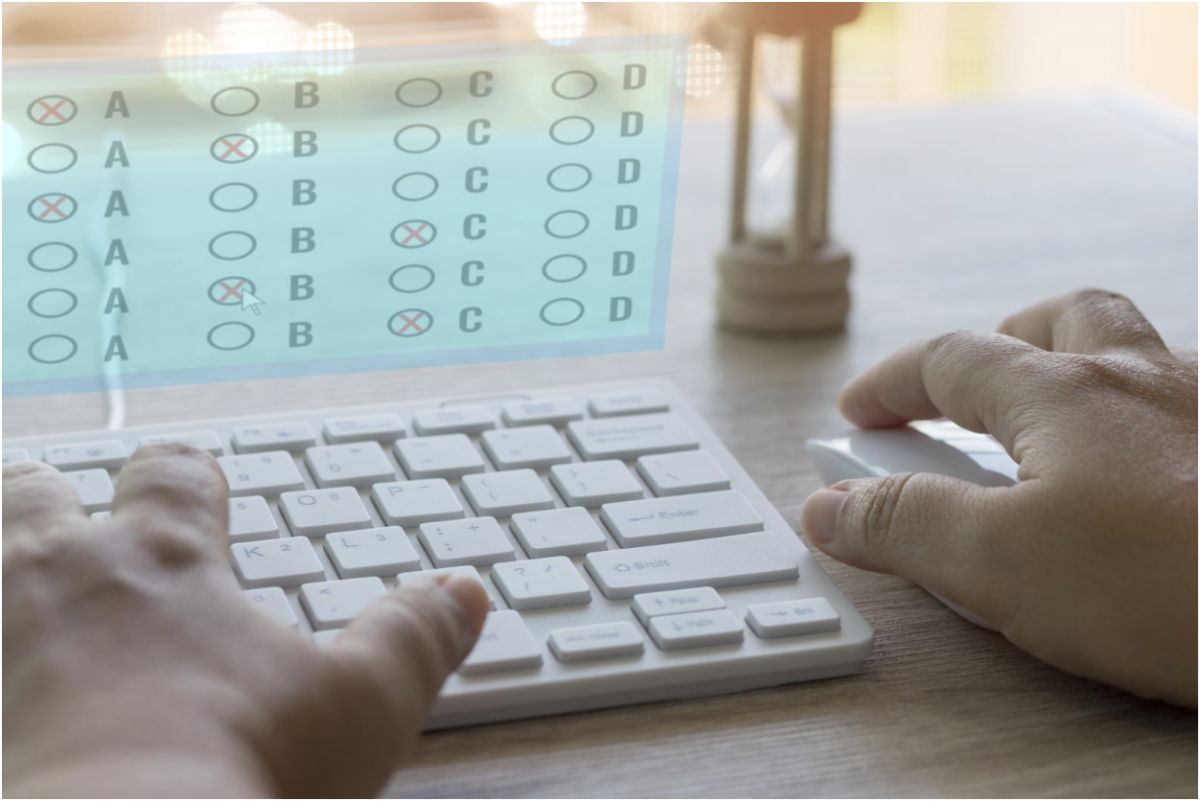According to a study conducted by Naiomi S. Baron, “Reading in a Digital Age,” 92% of participants found it easier to focus when reading on paper. The shift from the paper SAT to the online SAT may negatively affect the majority of the population who seem to have a harder time concentrating when reading online.
In addition, other negative trade-offs present when reading online, such as distractions and eyestrain. 82% of participants in the study reported scanning texts instead of reading them. These factors can all negatively impact the score of an individual taking the SAT, especially due to the detailed questions that commonly present themselves in this standardized test.
The duration of the online SAT is two hours and 14 minutes, and it is likely that online test-takers will experience eyestrain as a common outcome of reading online. Having trouble concentrating, something that can happen when reading online, while taking this standardized test will also likely result in a poorer grade.
Hastings High School juniors took the online PSAT this year and had varying thoughts on its new format.
Jacob Levan, a Hastings student, said, “[I] preferred the online PSAT over the physical one,” finding “the new reading and grammar format easier, and the bookmark and review tools useful.” He noted that “the Desmos calculator inside of the computer was also very helpful.” Other students also preferred the online PSAT because of these tools available.
However another student said, “the computer hurt my eyes. It was hard to read and to concentrate on a screen.”
Students had varying opinions on the paper PSAT, however there are issues with recall as this test took place in May 2023. Students took the online PSAT/NMSQT in October 2023.
Some students preferred the online format — one student said: “I found the paper PSAT a bit harder than the digital one. The readings were longer, which is more difficult for me personally.” Another said that “it was much easier to concentrate and read the English sections [on the online PSAT]” and that “the math problems were also easier.” Due to the variation in question type between the two tests, like the shorter passages, the online aspect did not seem to have a great effect on some students. However, others still struggled with the online aspect of this new test.
The main issue theorized for this new online test was the effect on students’ focus. One student said that “it was hard to concentrate [online].” However two other students agreed it was easier to focus due to the layout of the test. One said: “I focused well on both [formats]— the computer screen didn’t affect me.” Another student said, “I found the online PSAT easier to focus on than the paper one. I also liked having all of the questions separated individually.”The online PSAT showed only one question at a time, which allowed this student to focus strictly on that question.
On a survey taken of Hastings High School juniors, most students said that they preferred the online PSAT, contrary to previously conducted studies. 52% of the students who took the online PSAT found it generally easier to focus. Only about 35% of students found it easier to concentrate on the paper PSAT.
The format of the tests seemed more impactful than the platform the students were testing on. Most students who took the survey said that they preferred the format of the online PSAT as well as the tools that were available during the test. Regarding the format of the test, students were generally indifferent to the math sections but preferred the online PSAT’s version of the English section due to its shorter passages and individual questions. The students who preferred the paper said that the passages were more straightforward, saying the online font was too small and that it was easier to underline key points for each passage.
Overall, the students at Hastings High School preferred the online PSAT as the new verbal format and the test taking tools aided their test taking abilities and concentration.



















